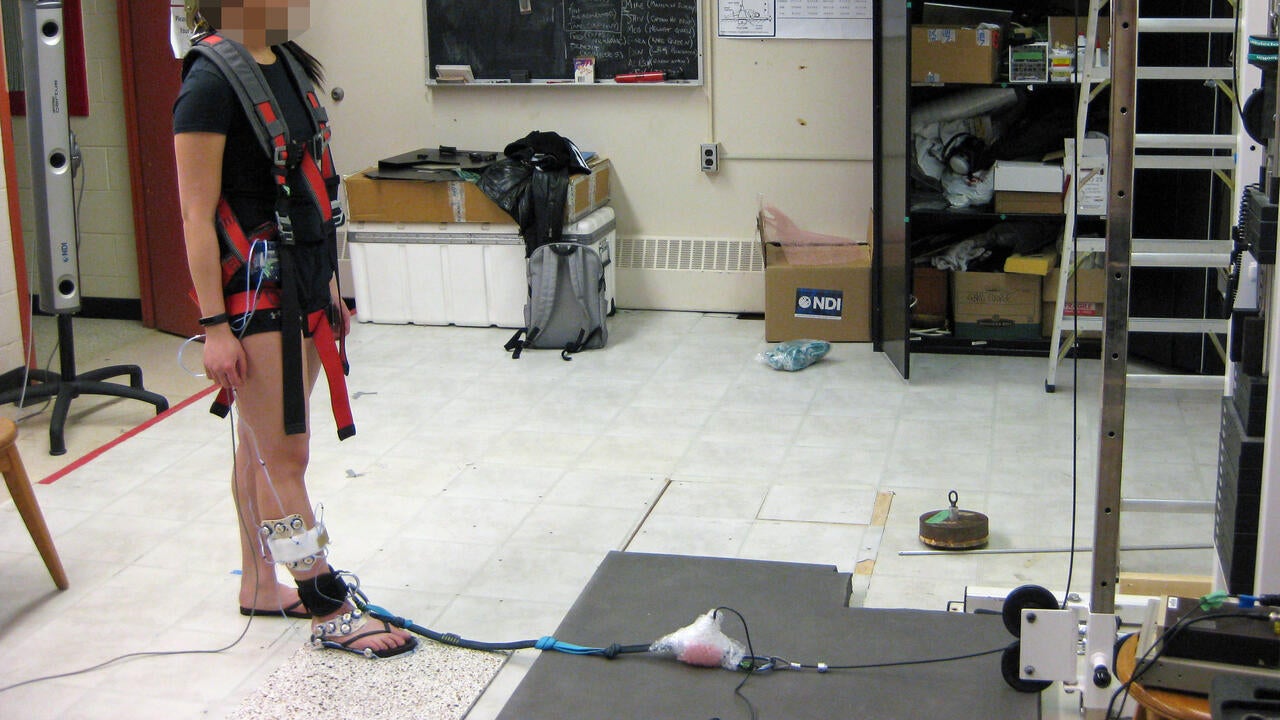
Are flip-flops more dangerous than bare feet?
Researchers at the University of Waterloo partnered with 30 Forensic Engineering, a firm that specializes in forensic reporting, to better understand why slips and falls can happen

Researchers at the University of Waterloo partnered with 30 Forensic Engineering, a firm that specializes in forensic reporting, to better understand why slips and falls can happen
By Eugenia Xenos Anderson Faculty of Applied Health ScienceFlip-flops have a tendency to come off the foot entirely during slips in dry and wet conditions, contributing to a greater risk of injury, says a University of Waterloo study.
Researchers at the University of Waterloo partnered with 30 Forensic Engineering, a firm that specializes in forensic reporting, to better understand why slips and falls can happen to better inform clients and the courts of the science behind injuries.
Lia Tennant, a PhD student in Waterloo’s Department of Kinesiology, said the firm wanted to know how slips in flip-flops change if the foot is also wet—a scenario unique to open footwear and one that had never been documented to their knowledge.
The researchers expected to see more sliding of the foot within the flip-flop when the foot was wet, but they were surprised to find the flip-flop came off the foot entirely – “decoupling” in both wet and dry conditions.
“Decoupling tended to happen most often when participants were slipping on wet tile with a wet foot, but also on dry tile with a dry foot,” Tennant said. “If the tile was wet but the foot was dry, we tended not to see decoupling as often. We collected 27 slips for each participant, and we saw decoupling at least once in 12 of our 17 participants.”
Rob Parkinson, a vice-president at 30 Forensic Engineering, said the more data that exists to understand why an event like a slip and fall can happen, the more clients and courts can understand the science behind costly injuries.
“By maintaining our relationship with world-leading researchers at the University of Waterloo, we are able to answer real-world questions regarding practical issues such as the role of footwear in a slip and fall. The answers to these questions help in understanding and preventing these events to avoid the significant personal and financial costs that result.”
The researchers created a simulation in the lab using a 3D active motion capture system, a body harness to keep participants safe, and a cable and pulley device attached to an ankle strap, inciting a slip at random times. Participants wore the same brand of flip-flop from the 2018 Canadian Paralympic team collection. All trials were performed on a Terrazzo tile surface to simulate workplace and commuter settings.
“While people may choose to wear minimal footwear for comfort and style, wearing flip-flops, in particular, may contribute to a greater risk of injury,” Tennant said. “As consumers, we likely focus on how comfortable the footbed of a flip-flop is, but the materials and the surface texture of the footbed could also be important from a safety and design perspective.”
So should we stop wearing flip-flops altogether? Tennant said that further study of real-life scenarios like walking or going downstairs is needed to see if decoupling occurs as frequently in these scenarios as what they saw when they forced a slip to occur.
“Another consideration is experience,” Tennant said. “Research has shown that people are adept at wearing a variety of footwear and can adapt how they walk for the specific demands of what they are wearing.” She pointed to suggestions from the Canadian Centre for Occupational Health and Safety, who recommend not rushing and paying attention while walking.
The study, “Analysis of invoked slips while wearing flip-flops in wet and dry conditions: Does alternative footwear alter slip kinematics?”, was published in Applied Ergonomics, and was co-authored by Liana Tennant, Donna Fok,, David Kingston, Taylor Winberg, Rob Parkinson, Andrew Laing and Jack Callaghan.

Read more
Researchers awarded funding to investigate ecology, climate change, repatriation, health and well-being through cultural and historical lens

Read more
15 University of Waterloo researchers have been named to the annual Highly Cited Researchers™ list for significant contributions to their specific fields of research

Read more
University of Waterloo researchers find that residents’ poor sleep can trigger problematic medication use, falls and delirium
The University of Waterloo acknowledges that much of our work takes place on the traditional territory of the Neutral, Anishinaabeg, and Haudenosaunee peoples. Our main campus is situated on the Haldimand Tract, the land granted to the Six Nations that includes six miles on each side of the Grand River. Our active work toward reconciliation takes place across our campuses through research, learning, teaching, and community building, and is co-ordinated within the Office of Indigenous Relations.